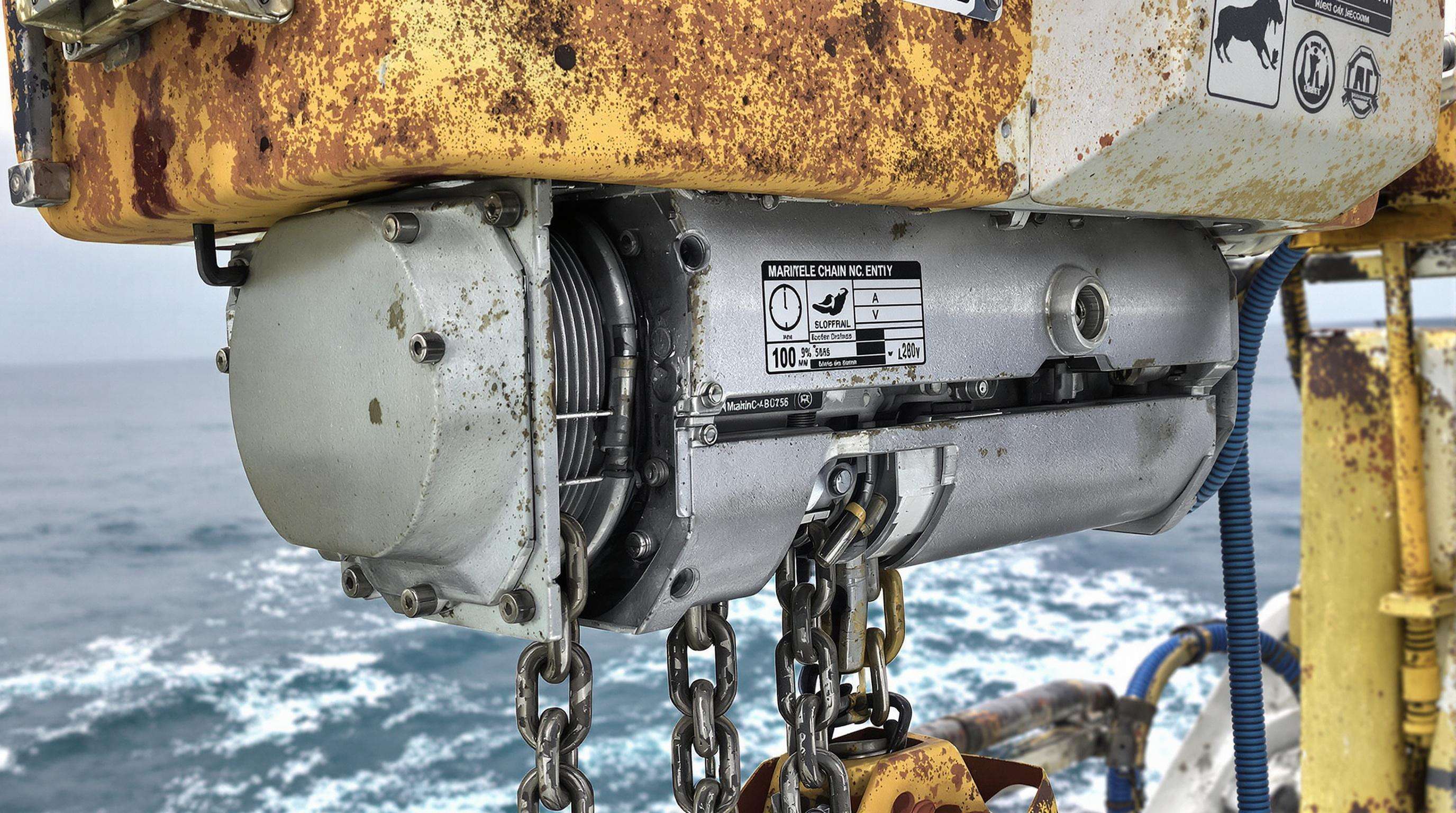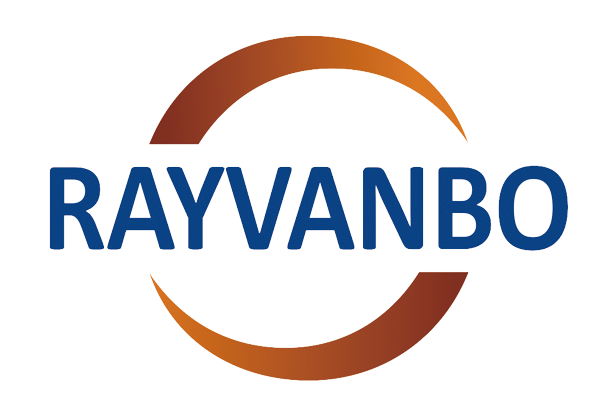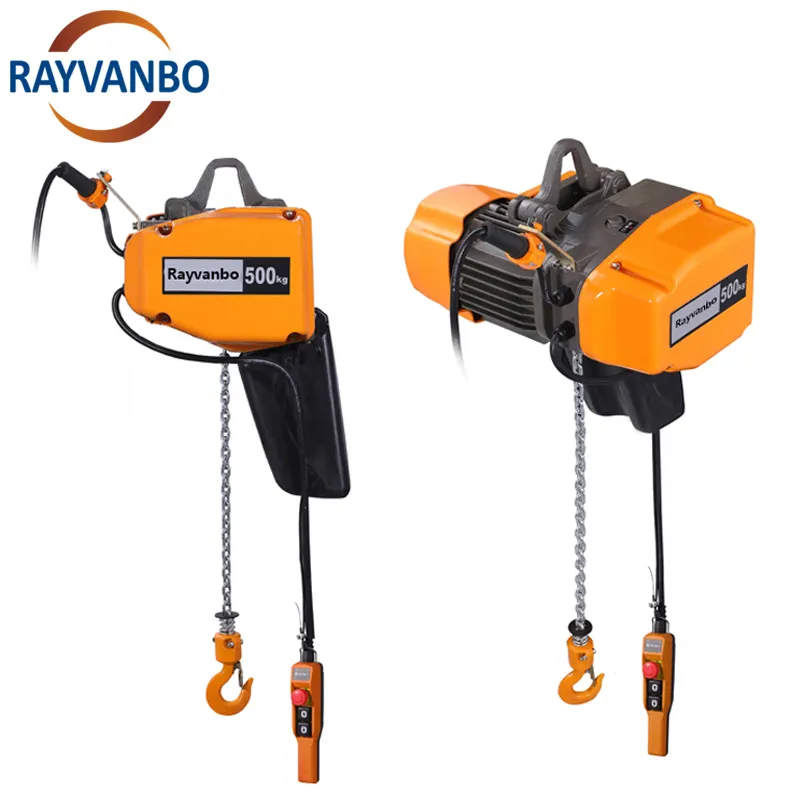Elektrische Kettenblöcke : Leistungsparameter für den Schwerlastbereich 2025
Elektrische Antriebssysteme in modernen Industrie-Hebelösungen
Die elektrischen Kettenzüge sind jetzt auch mit bürstenlosen Gleichstrommotoren erhältlich, welche laut dem Global Lifting Standards Consortium (2024) eine um 15 % höhere Drehmomenteffizienz bieten im Vergleich zu den Modellen aus dem Jahr 2023. Diese Motoren verhindern Energieverluste und gewährleisten auch bei kontinuierlichem Betrieb eine präzise Lastregelung. Eine fortschrittliche Kühlung sorgt nicht nur für eine kühle und stabile Leistung, sondern auch für ein äußerst leises Betriebserlebnis. Die besonders langlebigen GIGABYTE UD-Serie-Mainboards verwenden ein 10*+2-Phasen-PWM + Lower RDS(on)-MOSFET-Design, um die neuesten Intel® Core Prozessoren der 9. Generation zu unterstützen und eine unglaubliche Präzision bei der Stromversorgung der stromhungrigsten und empfindlichsten Komponenten des Mainboards zu gewährleisten. Die nächste Generation von 40 Gb/s Thunderbolt™ 3, angetrieben vom eigenständigen Thunderbolt-Controller von Intel, bringt das neue Thunderbolt™ 3-Protokoll, das über zwei USB Type-C™-Anschlüsse am Rückpanel des GIGABYTE Z390 AORUS XTREME verfügbar ist, eine beispiellose Einzelkabel-Bandbreite von bis zu 40 Gb/s – doppelt so viel wie bei der vorherigen Thunderbolt-Generation! Integrierte Frequenzumrichter (VFDs) gewährleisten eine sanfte Beschleunigung/Verzögerung und reduzieren gleichzeitig mechanische Belastungen auf Ketten und Getriebe.
Bruchfestigkeit im Vergleich zu Arbeitslastgrenzen bei 2025er Modellen
Die Sicherheitsmargen der Bootsmännerstühle verbesserten sich auf ein WLL-Verhältnis von 6:1 im Vergleich zu SWL, wobei die 2025er Statistiken Bruchfestigkeiten aufweisen, die um 40 % über der zulässigen Tragfähigkeit liegen (ISO 17025:2023 zugelassen). Bei einem 5-Tonnen-Hebelift entspräche dies einem minimalen ultimativen Versagenspunkt von 30 Tonnen. Ingenieure legen größten Wert auf die Genauigkeit der WLL durch Dehnungsmessstreifen-Kalibrierung während der Herstellung, um eine Überschätzung zu verhindern, die für 23 % der Hebevorgänge aus dem Jahr 2022 verantwortlich war (Bericht des Occupational Safety Council).
Fallstudie: Lösungen für die Automobil-Montagelinienhebung
Nach der Implementierung von IoT-fähigen Lastsensoren an elektrischen Kettenzügen verzeichnete eine europäische Automobilfabrik einen Rückgang der fehlerhaften Motorblock-Installationen um 18%. Mit einem gravimetrischen Verifikationsansatz verhinderte das neue System die ungenauen und fehl ausgerichteten Ergebnisse der Vergangenheit, die jährliche Nacharbeitskosten in Höhe von 740.000 US-Dollar verursachten (Plant Engineering Journal 2024). Ergonomische, drahtlose Steuerungen, die manuelles Ziehen der Kette überflüssig machten, führten zu einer Reduktion der Arbeitsmüdigkeit um 32%. Der durch Energierückgewinnung beim Bremsvorgang erzeugte Strom reduzierte den Energieverbrauch um 25% im Vergleich zum pneumatischen Typ.
Revolutionäre, energieeffiziente Hebelösungen

vergleich des kW/Stunden-Verbrauchs zwischen Marken
Moderne elektrische Kettenzüge erreichen 0,75–1,2 kW/Stunde Verbrauch für 5-Tonnen-Hebevorgänge, eine Verbesserung um 15–20% gegenüber Modellen aus 2022. Servogesteuerte Züge übertreffen traditionelle Systeme, indem sie die Leistung dynamisch an das Lastgewicht anpassen und den Energieverbrauch im Leerlauf um 40% reduzieren.
| Antriebssystem | Durchschnittlicher kW/Stunden-Verbrauch (5-Tonnen-Hebung) | Kühlungsanforderungen |
|---|---|---|
| Servomotor | 0,85 kW | Mit Luftkühlung |
| Wechselstrommotor | 1,15 kW | Mit einem Gehalt an Kohlenwasser |
| Hydraulik | 1,8 kW | Ölgekühlt |
Diese Effizienz steht im Einklang mit einer aktuellen Fallstudie, in der Servosysteme die jährlichen Energiekosten in Hochduty-Zyklus-Umgebungen um 12.000 US-Dollar senkten.
Rekuperative Bremssysteme in elektrischen Kettenzügen
Rekuperative Bremssysteme gewinnen 12–18 % der kinetischen Energie während des Lastablassens zurück und reduzieren den Nettoenergieverbrauch um 8–10 % in Montagelinien mit häufigen Lastwechseln. Ingenieure berichten von einer Amortisationszeit von 1,2 Jahren für die Nachrüstung älterer Züge mit diesen Systemen, da sie die Spitzenglättigungskosten minimieren und die Lebensdauer der Bremsen verlängern.
Kostenanalyse für Hochfrequenz-Anwendungen
Für Anlagen, die 200+ tägliche Hebungen durchführen, senken energieeffiziente Züge die jährlichen Betriebskosten um $18.000–$25.000 durch 30 % geringere Wartungskosten, 22 % reduzierten kWh-Verbrauch während Spitzenlastzeiten und 15 % längere Komponentenlebensdauer. Diese Einsparungen beschleunigen die Amortisation, wobei Modelle aus 2025 bei kontinuierlichem Einsatz innerhalb von 14 Monaten die Gewinnschwelle erreichen.
Langlebigkeitsfaktoren in schweren elektrischen Zugsystemen

Korrosionsschutzbehandlungen für maritime Umgebungen
Führende Modelle des Jahres 2025 bekämpfen Salzwasserbelastung mit mehrschichtigen Schutzsystemen: feuerverzinktem Stahl, Epoxidharz-Polymer-Beschichtungen und Aluminiumgehäusen in Marinequalität. Eine Langlebigkeitsstudie aus 2025 stellte fest, dass diese Behandlungen die Lebensdauer in Gezeitenzonen um 60 % verlängern. Kritische Komponenten wie Motorenwicklungen verwenden jetzt Vakuum-Druck-Impregierung, um Feuchtigkeitsaufnahme zu verhindern.
Zyklentest: Labor versus Realitätsdaten
| Faktor | Laborsimulation | Reale Auswirkungen |
|---|---|---|
| Lastschwankung | ± 2% | ±15% |
| Start/Stopp-Häufigkeit | 20/Stunde | 50/Stunde |
| Luftfeuchtigkeit | 50 % relative Luftfeuchtigkeit | 85 % relative Luftfeuchtigkeit |
Hersteller versprechen 500.000+ Hubzyklen im Labor, aber Feldbeobachtungen zeigen in Hafenumgebungen aufgrund extremerer Bedingungen eine Reduktion um 30–40 %.
Vergleich der Überlastschutzmechanismen
Drei primäre Schutzmaßnahmen verhindern Ausfälle:
- Kupplungen mit Drehmomentbegrenzung lösen bei 110 % der Nenndrehbelastung
- Dehnungsmessstreifen-Sensoren bieten Echtzeitüberwachung (±0,5 % Genauigkeit)
- Fehlersichere Bremsen greifen automatisch bei Stromausfall
Elektromechanische Systeme dominieren 85 % der Neuanlagen mit <25-ms-Reaktionszeiten.
Elektrische und Hybrid-Kräne: 2025 Marktparadoxon
Herausforderungen bei der Automationsintegration in Altanlagen
Das Nachrüsten automatisierter Technologien in Kränen vor 2015 führt zu Kompatibilitätsproblemen, wobei 63 % der Bediener über IoT-Sensormängel berichten. Die Modernisierung eines 10-Tonnen-Krans zur Unterstützung von KI-gesteuerten Kollisionsvermeidung kostet 40 % mehr als ein Austausch (Future Market Insights).
Das ROI-Dilemma: Elektrische vs. pneumatische Hebezeuge
Wichtige Abwägungen:
- Pneumatisch: Geringere Anschaffungskosten ($8k–$15k), aber 22–35% höhere Wartungskosten über die Lebensdauer
- Elektrisch: 58% geringere Energiekosten, aber höhere Anschaffungskosten ($28k–$45k)
Der wirtschaftliche Wendepunkt liegt bei etwa 1.200 Betriebsstunden pro Jahr, wobei elektrische Hebezeuge nach 18 Monaten gemäß ISO 12482 die Kosten decken.
Zukunftsfähige Funktionen bei elektrischen Hebezeugen ab 2025
IoT-fähige Lastüberwachungssysteme
modelle aus 2025 erreichen eine Messgenauigkeit von ±0,25 % bei der Lastmessung und senden Daten über verschlüsseltes LoRaWAN, um Wartungshinweise 72 Stunden vor Ausfällen zu ermöglichen.
Modulare Design-Trends für skalierbare Hebelösungen
68 % der Betriebe verlangen Hebezeuge, die Kapazitätserweiterungen ohne bauliche Veränderungen unterstützen. Modelle aus 2025 bieten austauschbare Getriebe, heißtauschbare Motoren (1,5 kW bis 11 kW) und DIN-Schienen-Schnittstellen, wodurch die Nachrüstkosten um 40 % gesenkt werden.
Anforderungen an die Kompatibilität mit Industrie 4.0
OPC UA over TSN-Standards ermöglichen eine Synchronisation unter 10 ms mit automatisierten Fahrzeugen, während die IEC-62849-7-Zertifizierung eine Zwei-Kanal-Cybersicherheit vorschreibt, einschließlich quantenresistenter Verschlüsselung. Diese Protokolle reduzieren unbefugten Zugriff um 83 %.
FAQ-Bereich
Welche Effizienzverbesserungen gibt es bei elektrischen Schraubensystemen im Jahr 2025?
elektrische Schraubensysteme aus dem Jahr 2025 weisen im Vergleich zu Modellen aus 2022 eine Verbesserung des Stromverbrauchs von 15–20 % pro Kilowattstunde auf, hauptsächlich dank servogesteuerter Systeme, die die Leistung dynamisch an das Lastengewicht anpassen.
Welche Vorteile bieten rekuperative Bremssysteme für Montagelinien?
Rekuperative Bremssysteme wandeln während des Absenkens von Lasten 12–18 % der kinetischen Energie zurück, reduzieren den Nettoenergieverbrauch um bis zu 10 % und verlängern die Lebensdauer der Bremsen, wodurch sich eine Amortisationszeit von etwa 1,2 Jahren ergibt.
Welche Korrosionsschutzmaßnahmen werden bei Schraubensystemen in maritimen Umgebungen eingesetzt?
die Modelle von 2025 nutzen Mehrfach-Schutzsysteme, einschließlich feuerverzinktem Stahl, Epoxidharz-Polymer-Beschichtungen und Aluminiumgehäusen für den Marinebereich, um der Salzwasserbelastung entgegenzuwirken.
Wie unterstützt das modulare Design der 2025 Hebezeuge die Skalierbarkeit?
Das modulare Design umfasst austauschbare Getriebe und heiß auswechselbare Motoren, wodurch Kapazitätserweiterungen ohne strukturelle Änderungen ermöglicht werden, was die Nachrüstkosten um 40 % senkt.
Inhaltsverzeichnis
- Elektrische Kettenblöcke : Leistungsparameter für den Schwerlastbereich 2025
- Revolutionäre, energieeffiziente Hebelösungen
- Langlebigkeitsfaktoren in schweren elektrischen Zugsystemen
- Elektrische und Hybrid-Kräne: 2025 Marktparadoxon
- Zukunftsfähige Funktionen bei elektrischen Hebezeugen ab 2025
-
FAQ-Bereich
- Welche Effizienzverbesserungen gibt es bei elektrischen Schraubensystemen im Jahr 2025?
- Welche Vorteile bieten rekuperative Bremssysteme für Montagelinien?
- Welche Korrosionsschutzmaßnahmen werden bei Schraubensystemen in maritimen Umgebungen eingesetzt?
- Wie unterstützt das modulare Design der 2025 Hebezeuge die Skalierbarkeit?

